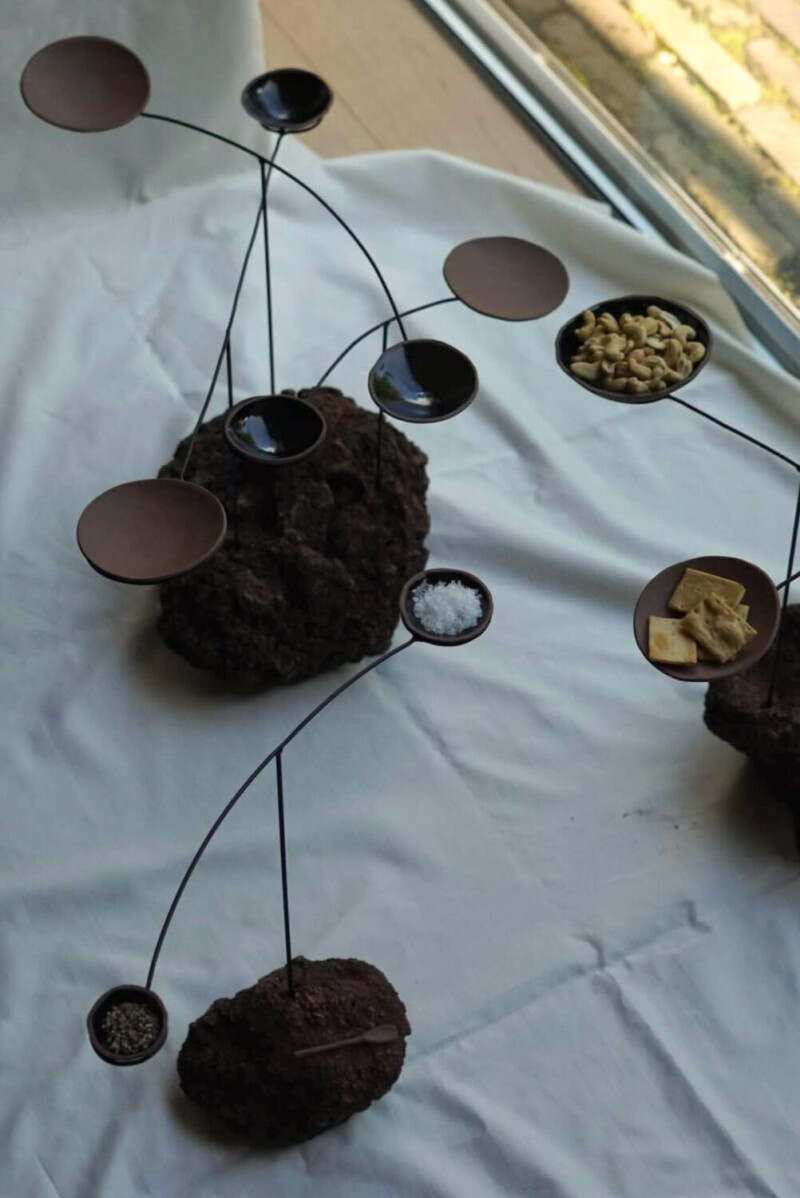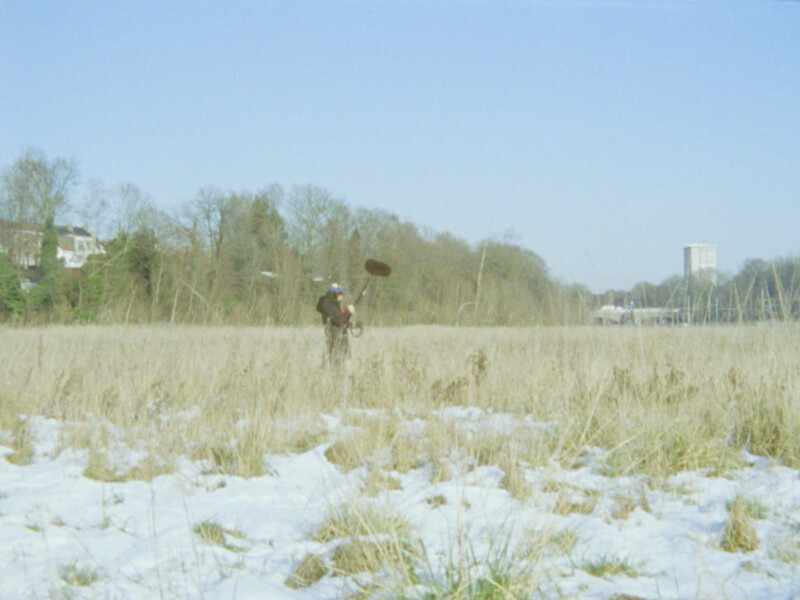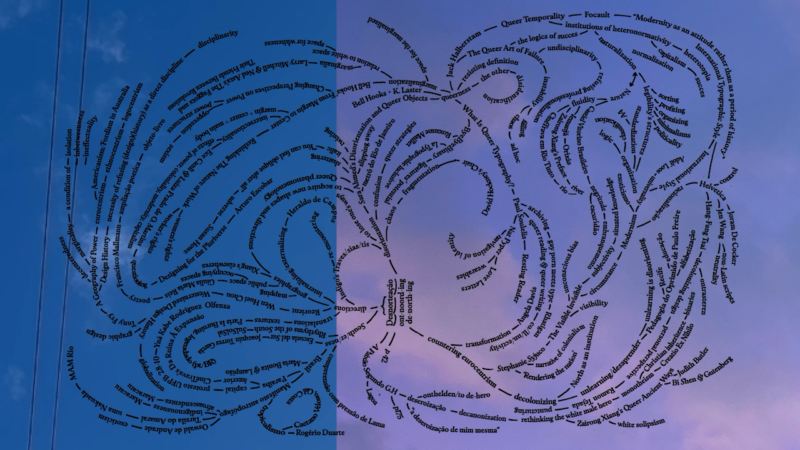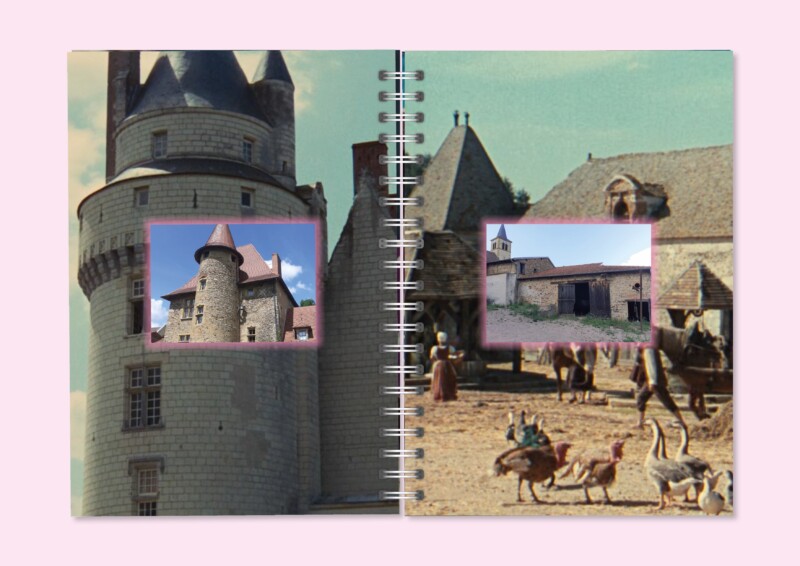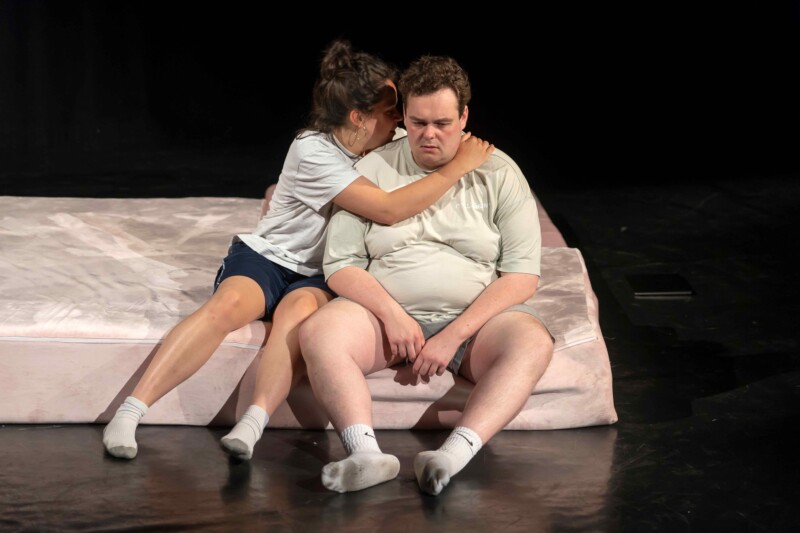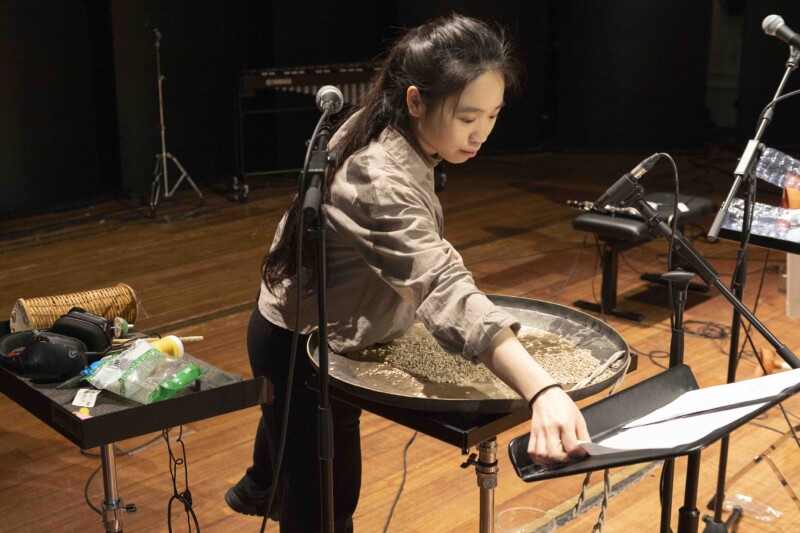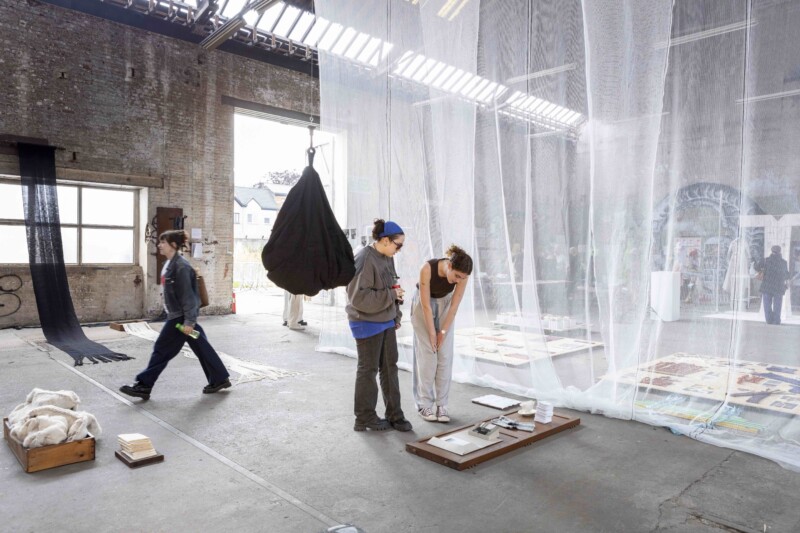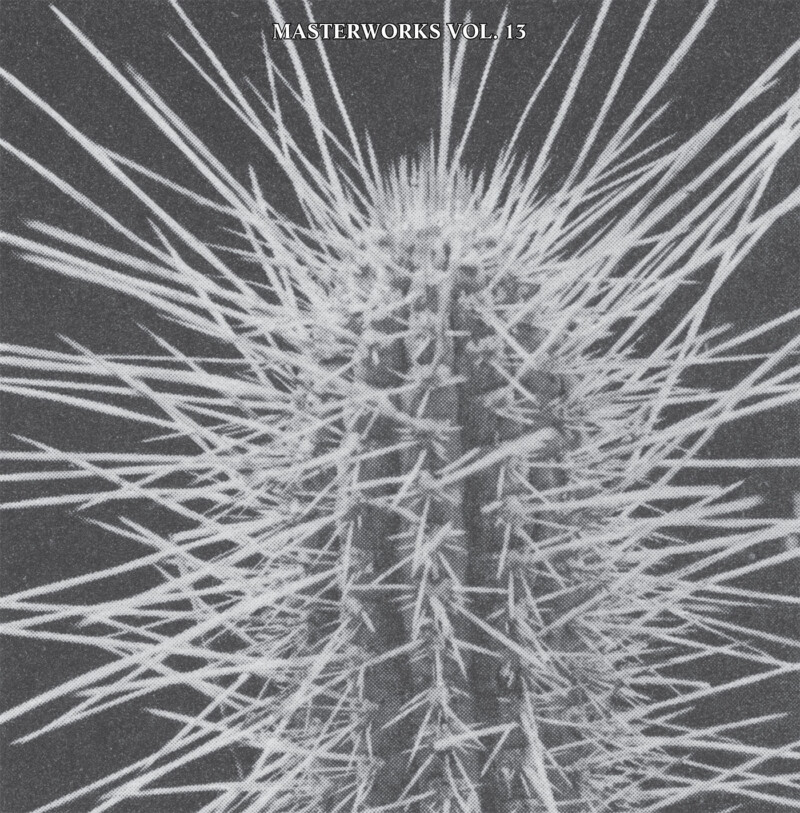Dirkie
Death is around the corner, tells a monotone drawling little girl’s voice us slowly and deliberately on a high-pitched tone. In the slightly disturbing film of Lyn de Weijer, we listen to Lyn’s conversation with her late childhood hamster Dirkie. A monologue with an AI generated child’s voice leads the way, using an eerily adult vocabulary, into an absurd coming of age tale. All the while we are taken into a discontinuous strange flow of intimate footage. Of a 10 year old girl with an eye patch, actual video recordings of a play Lyn did as a kid, cinematic stills of Lyn and friends with wigs, apparently dancing, insects pinned on needles and bubble plastic, an endearing picture of her and her grandmother nose to nose. Loving, often close on the subjects, a bit unsettling. De Weijer creates a world where lingering beneath the albeit smooth surface of the domestic, there is something very off and attractively weird, sometimes hilarious, giving the viewer the urge to listen more carefully and to look for more, whatever that could be.


PAIN PART OF LIFE
It began with a whacky dream, Lyn tells me, about a female vampire sexually harassing her, about her hamster Dirkie frozen in shock because of paparazzi chasing him and about Dirkie and a labrador making out.
Not surprisingly, Miranda July is an inspiration for de Weijer. Like July, de Weijer often interacts with strangers: “I met a woman in her mid-thirties, whose letter is also read out loud in the film. And I met Mona, this incredible child with an eye patch, we connected and she became a main character.” The film functions like a poetic stream of consciousness. At first encounter, the viewer tries to linger in the child narrator’s tales but he/she is kept alienated by its psycho-analytical terminology and an array of disorienting visuals. Dirkie cuts through narrative clichés, holding the viewer in a continuous game of the ordinary and the extra-ordinary, while telling us what is important in life: “For me, Dirkie is about belonging. Defining yourself. The process of connecting, letting go, feeling lonely, connecting again etc. I needed Dirkie, this curious animal from my childhood, to project emotions on. Without Dirkie, it wouldn’t have worked for me. The hamster died so the relationship too. Pain is part of life. I kind of like the sorrow of it, the melancholy.”

UNEASINESS OF PEOPLE
“My childhood was warm syrup”, says the child narrator at a certain point, since the film is also a way for Lyn to pay homage to her parents: “How can I ever repay them for what they did for me, my childhood, all of it, this overwhelming thing. It made me think about having children myself. I have no idea what it entails, but I have this strange longing for them.” Like July, de Weijer likes to explore the uncanny by destabilizing the boundary between the recognizable and the strange. Ordinary interactions, with animals or friends, seem tinged with discomfort: “What interests me is the uneasiness of people, in their being, in their relationships. This Unheimliche, I like that very much, it gives me the opportunity to experiment, with people, wigs, props, animals, still photography and cinema, with artificial intelligence, to fantasize, to look for strangers, to construct images, to try, to let go.” Dirkie invites us to see the uncanny in what seems a normal upbringing, challenging our perceptions and leaving us with a sense of unease, both haunting and profoundly human. The film ends with Lyn chanting an evergreen at the top of her lungs while we look out of an airplane window. So shrieking loud it no longer feels like a cheerful action.
Text by Barbara De Beuckelaere, journalist and photographer






















